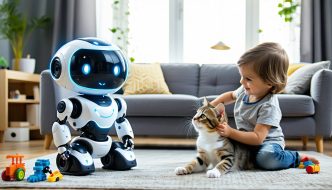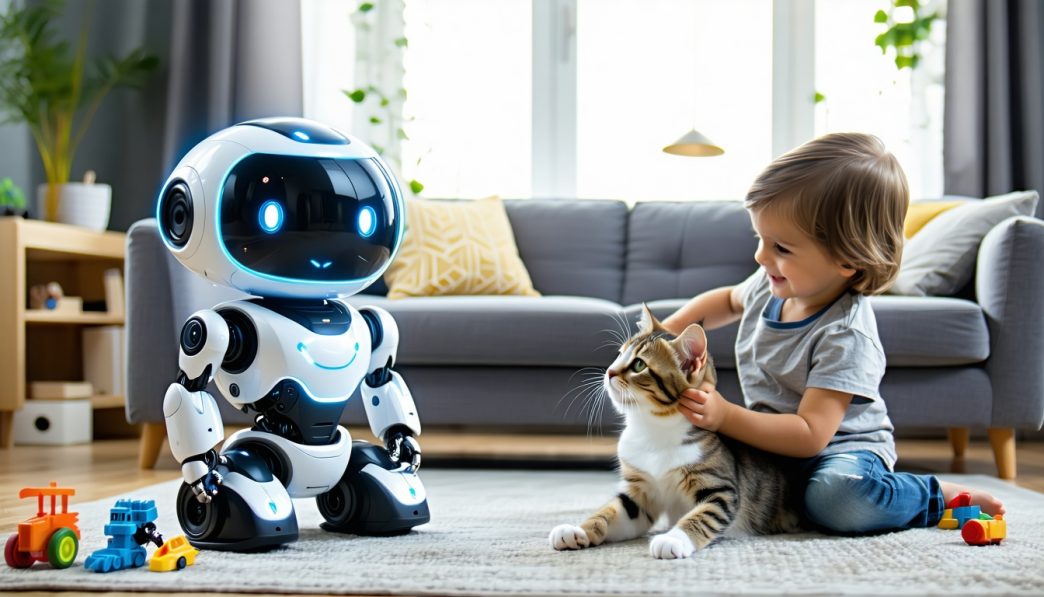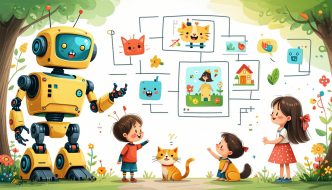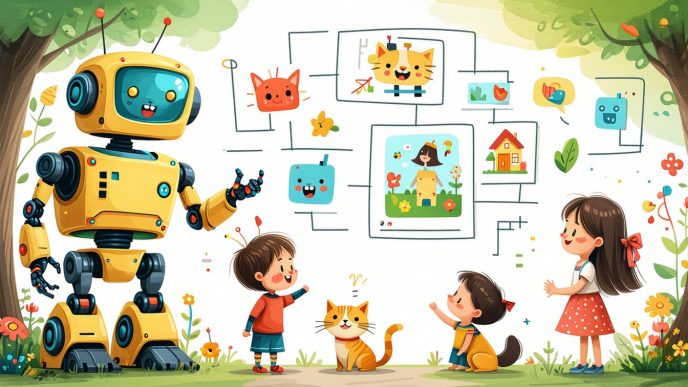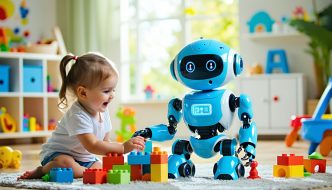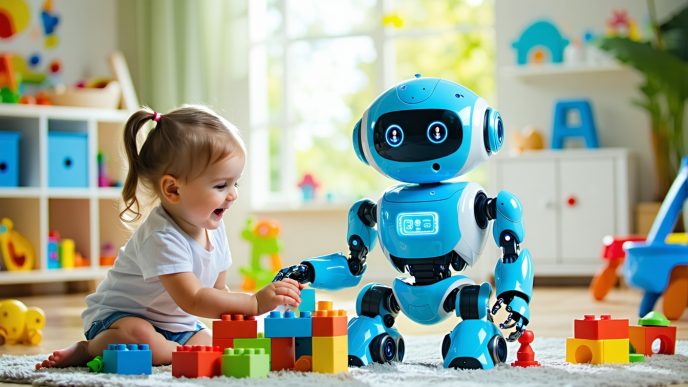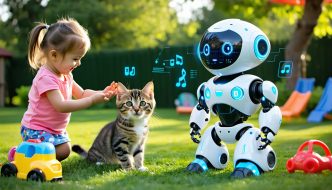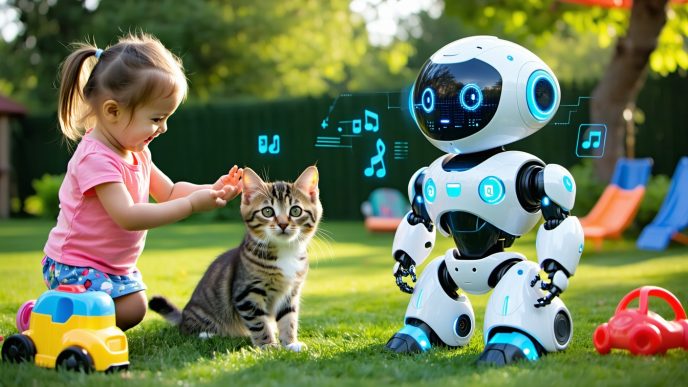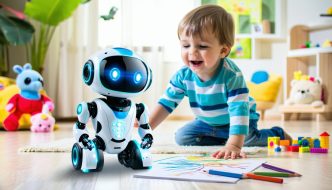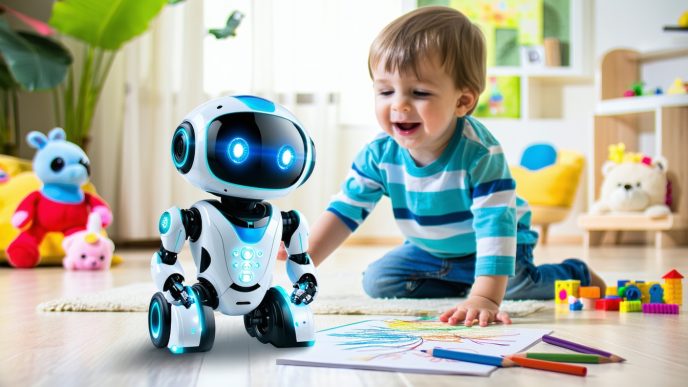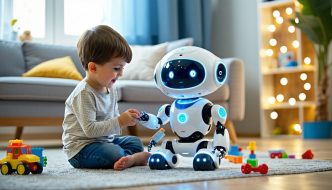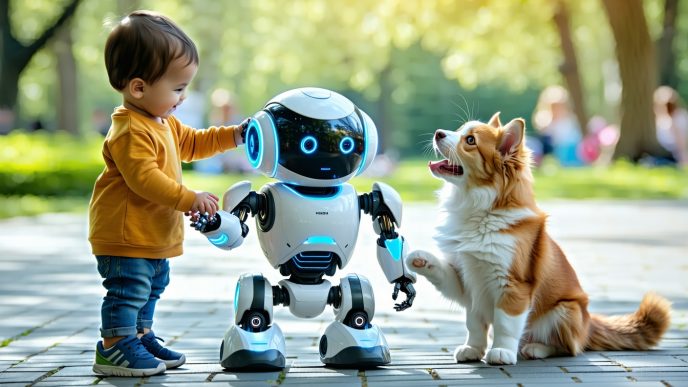Enhancing Pet Care with Robotics
Exploring the Role of Robots in Pet Monitoring
Robots are increasingly becoming integral to pet care, particularly in monitoring pets when their owners are away. The deployment of these technological devices provides an innovative approach to ensuring that pets are safe, engaged, and healthy at home. Robots designed for monitoring pets offer functionalities such as real-time video streaming, interactive communication, and activity tracking. These features enable pet owners to stay connected with their furry companions, providing peace of mind while juggling busy schedules.
The use of robots in pet care exemplifies the broader trend of integrating technology into everyday life. As robots advance, they not only improve monitoring capabilities but also enrich the interactions between pets and their owners, creating safer environments for both. For more information on how robots can facilitate interactions between children and pets, visit our article on child and pet interaction with robots.
| Feature | Description |
|---|---|
| Real-Time Monitoring | Allows owners to see their pets live via cameras. |
| Two-Way Communication | Enables owners to talk and interact with their pets. |
| Activity Tracking | Monitors pet movements and behaviors throughout the day. |
Benefits of Using Robots to Keep an Eye on Pets
Utilizing robots to monitor pets offers numerous advantages. These benefits include:
-
Enhanced Safety: Robots can alert owners to unusual behavior or emergencies, ensuring that pets are safe when left alone. For more on safety features, refer to our article on safety features for kids and pets in robots.
-
Reduced Separation Anxiety: The ability to interact with pets via remote communication can help alleviate feelings of loneliness and anxiety in both pets and owners.
-
Play and Engagement: Some robots come equipped with toys or interactive functions, encouraging play and exercise. This can help keep pets physically active and mentally stimulated. Check out options for these features in our article on robot pet toys.
-
Activity Insights: Activity tracking features allow owners to monitor their pets’ daily behaviors, ensuring they are getting the proper amount of exercise and playtime. This function is especially useful for maintaining a pet’s health. Learn more about this in our article on robot activity tracking for pets and kids.
-
Convenient Monitoring: Pet owners can easily check in on their pets from anywhere using a smartphone or other connected devices, providing convenience in managing pet care when away from home.
By embracing robots for monitoring, pet owners can foster a safer and more engaging environment for their pets, demonstrating the positive impact of robotic advancements in everyday life. As these technologies continue to evolve, they promise to further enhance pet care capabilities and promote better interactions.
Robot Pet Monitors
Robot pet monitors are becoming an invaluable tool for pet owners who wish to ensure their furry friends are safe and entertained while away from home.
How Robot Pet Monitors Work
Robot pet monitors operate using a combination of cameras, sensors, and automated features to oversee pets remotely. These devices are typically equipped with:
- Cameras: For real-time video streaming, allowing owners to observe their pets’ activities.
- Microphones and Speakers: Enabling two-way communication, so owners can talk to their pets and hear them respond.
- Sensors: Detecting movement, sound, or other activities that may require attention.
Most robot pet monitors connect to Wi-Fi networks, allowing owners to access live footage and communicate with their pets through a smartphone application. This interaction helps maintain the bond between owners and their pets, even when they are apart. For more insights on this topic, refer to our article on child and pet interaction with robots.
Features to Look for in Robot Pet Monitors
When selecting a robot pet monitor, it is important to consider various features that can enhance the monitoring experience. Here are some key specifications to look for:
| Feature | Description |
|---|---|
| Video Resolution | Higher resolution provides clearer images of pets. 1080p is common for good quality. |
| Pan and Tilt | Allows the camera to move and capture a wider area, ensuring pets are visible. |
| Night Vision | Essential for monitoring pets in low-light conditions. |
| Treat Dispenser | Enables pet owners to reward their pets remotely, reinforcing positive behavior. |
| Motion Alerts | Sends notifications to the owner’s device when movement is detected, promoting awareness. |
| Battery Life | Longer battery life ensures the monitor operates without frequent charging, important during long absences. |
Incorporating these features not only aids in monitoring pets but also adds layers of interaction and control, making it a more holistic solution for pet care. For further information on engaging robots, check out our article on robots as play companions for children or explore robot pet toys that can also enhance pet interaction.
Remote Monitoring Capabilities
With the rise of technology, robots have emerged as valuable tools for monitoring pets in the home. This section focuses on two primary capabilities of these robotic devices: real-time video monitoring and interactive communication with pets.
Real-Time Video Monitoring
One of the most significant features of robots designed for pet monitoring is real-time video capabilities. These devices allow pet owners to observe their pets while away from home, providing peace of mind regarding their safety and well-being.
The following table outlines key aspects of real-time video monitoring in pet robots:
| Feature | Details |
|---|---|
| Video Quality | HD (720p or 1080p) is common |
| Field of View | Typically ranges from 90° to 180° |
| Night Vision | Allows viewing in low-light conditions |
| Motion Detection | Alerts owners to movement in the area |
| Mobile App Integration | Enables remote access via smartphone/tablet |
Real-time monitoring facilitates immediate feedback for pet owners, allowing them to check in during the day and ensure that their furry friends are safe and secure. For more insights into how robots can enhance your family environment, explore our article on child and pet interaction with robots.
Interactive Communication with Pets
Robots equipped with communication features enable owners to interact with their pets even from afar. These robots often have built-in speakers and microphones, allowing owners to talk to their pets and hear them in return.
Key features of interactive communication include:
| Communication Feature | Description |
|---|---|
| Two-Way Audio | Enables conversations between owner and pet |
| Treat Dispensing | Some robots can dispense treats on command |
| Interactive Sounds | Play sounds or commands to engage pets |
| Remote Commands | Owners can give commands or call pets |
Such interactive capabilities can help reduce pet anxiety when left alone. The ability to communicate not only keeps pets engaged but also strengthens the bond between pets and owners, mirroring the benefits seen in emotional bonding with robots.
By utilizing robots for monitoring pets at home, owners can ensure their pets receive attention and care even when they are physically absent. The advancements in real-time monitoring and interactive communication highlight the importance of technology in modern pet care. For more information on how technology can aid in the care of both pets and children, visit our article on robots teaching safety to kids.
Safety and Security Measures
With the increasing implementation of robots for monitoring pets at home, ensuring the safety of both pets and the household is paramount. This section examines the measures that are put in place to protect pets and addresses data privacy concerns related to robotic monitoring systems.
Ensuring Pet Safety in the Home Environment
When utilizing robotic technology for pet monitoring, owners must consider the potential hazards their pets might encounter. Advanced robotic systems come equipped with various safety features to mitigate these risks and provide a secure environment.
The table below outlines common safety features found in robots designed for monitoring pets:
| Safety Feature | Description |
|---|---|
| Obstacle Detection | Robots can navigate around obstacles to prevent collisions. |
| Safe Speed Control | Movement speed is regulated to avoid startling pets. |
| Emergency Alerts | Systems can send notifications to owners in case of issues. |
| Interactive Features | Robots can engage pets to reduce anxiety or boredom. |
These features ensure that while a pet is being monitored, they are not placed in jeopardy by the robot itself.
Data Privacy and Protection Concerns
As robots increasingly take on monitoring roles within homes, data privacy concerns have emerged. Parents and pet owners may worry about the safety of their family’s and pets’ personal information.
Robots that monitor pets typically collect data to facilitate functions such as video recording and interaction. Understanding how this data is handled is crucial. The table below summarizes key data protection measures typically seen in robotic monitoring systems:
| Data Protection Measure | Description |
|---|---|
| Encryption | Data is encrypted to protect against unauthorized access. |
| User Control | Owners can manage what data is collected and stored. |
| Privacy Settings | Customizable options to regulate data sharing and visibility. |
| Secure Communication | Secure channels are utilized for data transmission. |
These measures aid in safeguarding personal information while using robotic devices to monitor pets in the home. By ensuring robust safety and security protocols, robot technology can provide valuable assistance without compromising on safety. For additional insights on how robots can create safe interactive experiences, explore our articles on child and pet interaction with robots and safety features for kids and pets in robots.
Integration with Smart Home Technology
Integrating robots with smart home technology enhances their functionality, allowing for seamless monitoring, interaction, and management of pets within the home environment. This compatibility provides convenience and peace of mind for pet owners.
Compatibility with Smart Home Systems
Many modern robot pet monitors are designed to be compatible with various smart home systems. This integration allows users to control and monitor their pets through a single platform, such as mobile applications or smart home hubs. The devices can often connect to popular systems like Amazon Alexa, Google Assistant, or Apple HomeKit.
The table below highlights the key features of compatibility for robot pet monitors:
| Feature | Compatibility Options |
|---|---|
| Voice Control | Alexa, Google Assistant, Siri |
| App Integration | iOS, Android, Web applications |
| Compatibility with Smart Devices | Cameras, door locks, lights |
| Notifications and Alerts | Push notifications, email alerts |
The ability to receive real-time alerts and notifications regarding pet activity, reminders for feeding, or potential issues enhances pet owners’ ability to manage their home environment effectively.
Automation and Integration Features
Automation features in robot pet monitors allow for pre-set routines and tasks, enabling a more hands-off approach to pet care. Users can schedule feeding times, activate monitoring, and set interaction periods with their pets remotely.
Some notable automation features include:
- Scheduled Monitoring: Users can set specific times for the robot to monitor pets throughout the day.
- Automated Feeding: Many robots can dispense food at set intervals, ensuring pets receive their meals on time.
- Activity Tracking: The robots can also maintain logs of pet activities, which can be accessed via apps for owners to monitor health and behavior patterns. For more insights, consider exploring robot activity tracking for pets and kids.
- Emergency Alerts: Smart robot monitors can notify owners in case of unusual activities or emergencies, ensuring the safety of their pets.
The integration of robots into smart homes not only aids in monitoring but also strengthens the overall pet ownership experience. By combining the capabilities of pet monitoring robots with home automation, owners can foster a more interactive, engaging, and safe environment for their pets. For additional insights into child-pet dynamics, visitors may refer to our article on child and pet interaction with robots.
Future of Pet Monitoring
The integration of robotics in pet care is continuously evolving. As technology advances, new capabilities are emerging to enhance how pets are monitored and cared for at home. The future of monitoring pets with robots promises significant improvements and innovative applications that cater to the needs of pet owners.
Advancements in Robotics for Pet Monitoring
Recent advancements in robotics technology are revolutionizing the capabilities of pet monitoring systems. Improved sensors, artificial intelligence (AI), and machine learning algorithms enable robots to better understand pet behaviors and needs. Some advancements to consider include:
| Advancement | Description |
|---|---|
| AI Behavior Recognition | Robots can learn and adapt to specific pet behaviors, allowing for more customized interaction. |
| Enhanced Sensory Detection | New robots are equipped with better audio and visual sensors to detect sounds and movements more effectively. |
| Autonomous Navigation | Robots can move fluidly around the home, ensuring thorough monitoring capabilities without requiring constant management. |
These developments not only enhance the real-time monitoring of pets but also allow for more interactive and engaging experiences. For instance, AI behavior recognition can help robots respond effectively based on the pet’s mood or activity.
Potential Innovations in the Pet Care Industry
Looking ahead, various innovations are on the horizon for pet care involving robotics. These innovations aim to improve both the safety and engagement of pets while providing peace of mind to their owners. Potential innovations may include:
| Innovation | Description |
|---|---|
| Smart Feeding Systems | Robots that can dispense food at scheduled times or based on activity levels of the pet, ensuring proper nutrition. |
| Activity Tracking Integration | Advanced robotics equipped with tracking features to monitor physical activity and provide insights about pet health. |
| Social Interaction Features | Robots designed to play with pets and provide companionship, enhancing their quality of life. |
As the intersection of robotics and pet care continues to develop, parents and pet owners will benefit from tools that foster emotional bonding with their pets. For further details about the emotional connections between robots and pets, refer to our article on emotional bonding with robots.
The future of robotics in monitoring pets at home looks promising, not only in technological advancements but also in transforming daily interactions between pets and their human companions. Parents who wish to explore topics such as child and pet interaction with robots or the role of robots as play companions for children will find a wealth of information as the landscape evolves.

